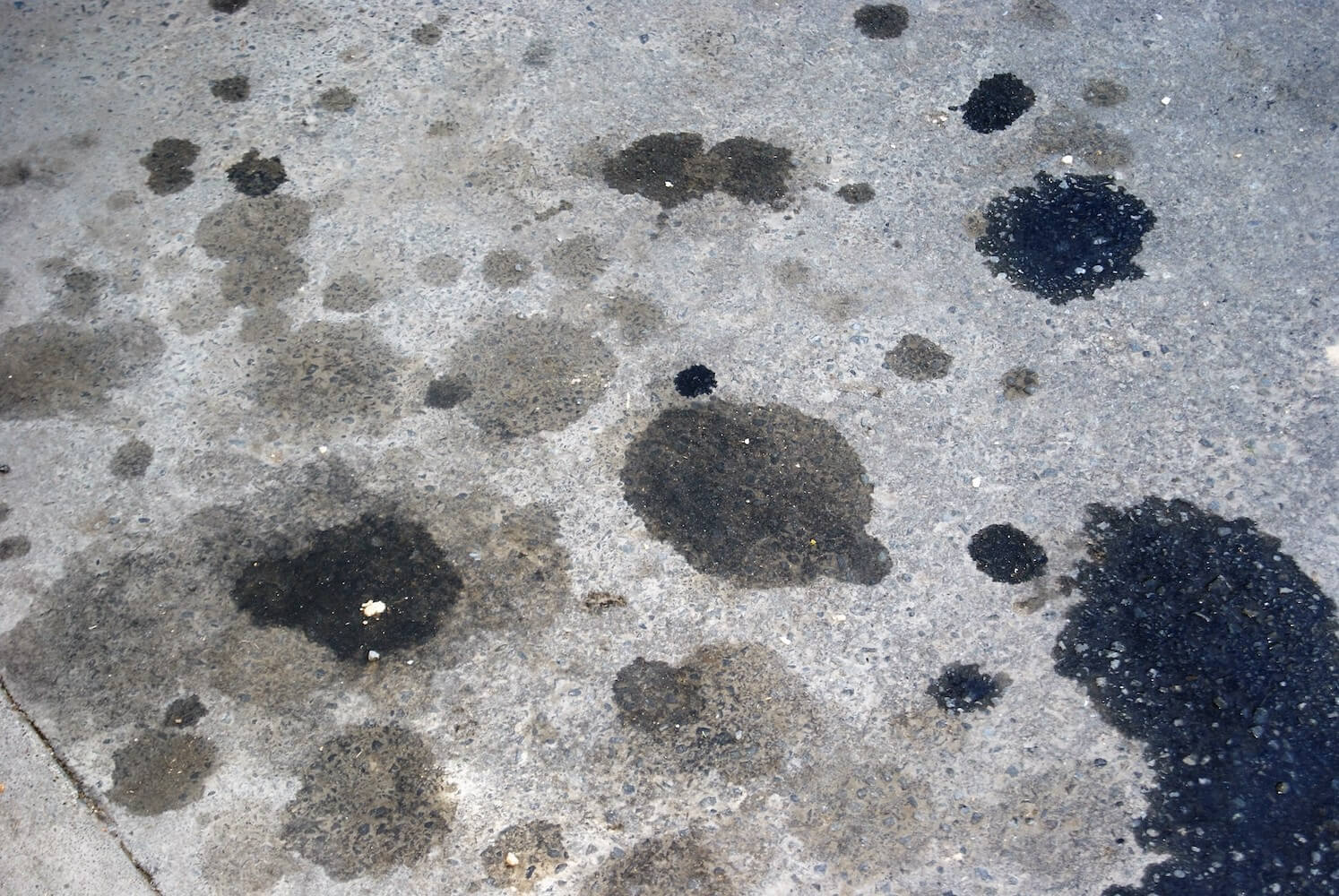Though oil spillage was once considered harmless to concrete, new evidence suggests it can be detrimental.
Oil spills and leaks happen, particularly in structures that deal with the storage, transport, or processing of oil products. Contamination can occur through a variety of avenues, but the main concern when dealing with contaminated concrete (outside of the environmental issues) is whether the structure is still sound. What do these leaks or spills do to the concrete below them?

Though oil spillage was once considered harmless to concrete (or even beneficial against freezing and thawing damage), new evidence suggests it can be detrimental. The physical bonds between the components of concrete provide strength. When looking at fresh concrete, if the amount of oil contamination is approximately 5% or more of the total batch volume, the cement particles and fine aggregate can become covered with oil, which acts as a barrier to the bonds of the matrix components. This means that the strength and other mechanical properties are compromised, and the concrete will be weaker and less durable.
On the other hand, hardened concrete is less susceptible to damage from oil because the bonds between the elements have already been created, and the oil cannot cover the fine aggregates and cement particles. Traditionally, the effects of an oil spill on cured or hardened concrete are thought to be either non-harmful or mildly harmful, and the long-term effects are generally minimal.
Assessment of the effects of oil contamination on concrete often starts with a visual examination, which can reveal areas of contamination because oil tends to penetrate into the pores of concrete and is difficult to remove. However, a visual inspection cannot completely determine the extent of damage, as the depth of penetration below the surface is not accessible. To fully assess the magnitude of the loss, and propose a proper restoration strategy, several methods are available depending on the age and condition of the concrete material:
Freshly poured concrete: If the cement, sand, and other matrix particles are covered with oil during the construction of a concrete element, it may be compromised. To analyze the possible damage, at least five 4×8-inch cylinders should be cast and tested for compressive strength, density, penetrability, and air voids.
Hardened concrete: For slabs and structures that have already hardened, there are a number of testing protocols that can be considered. First, a visual inspection of the contamination will always be necessary. This will determine sample areas for further testing, from which cores be extracted and inspected/tested. If the tested samples provide cause for concern, the entire surface (both contaminated and non-contaminated areas) can be tested using non-destructive methods such as Ultrasonic Pulse Velocity (UPV). Such testing will assess the uniformity and quality of the concrete and will help to determine whether there are any voids, cracks, INA or other deformities within the concrete that may not be visible from the surface. Analysis of the physical and chemical properties of the concrete can be done if any concerns are noted.
Repair and remediation methods depend on the depth of the contamination and the magnitude of the damage. When hardened concrete is exposed to oil, the standard protocol to address surface contamination includes, cleaning the surface with a solvent and sealing the contaminated elements to prevent future deterioration. Prior to using the solvent, as much oil as possible must be removed. After applying the solvent, the hydrocarbon can be removed with vacuum suction. Once the surface has been cleaned, the concrete must be tested for in place mechanical and durability requirements and then compared with the applicable code and design requirements. In cases of deep oil penetration, surface cleaning is unlikely to remove the contamination, and the concrete often must be replaced.
Should the contamination happen during the creation of the mix, and test results show deviation from the code requirements, localized surface cleaning will not be sufficient, and removal of the entire structure and replacement with a similar (uncontaminated) concrete mixture is likely to be necessary.
Our forensic concrete experts are available to review the condition of contaminated concrete structures and provide proper restoration suggestions. To shed light on your files, we will be happy to assist you.
